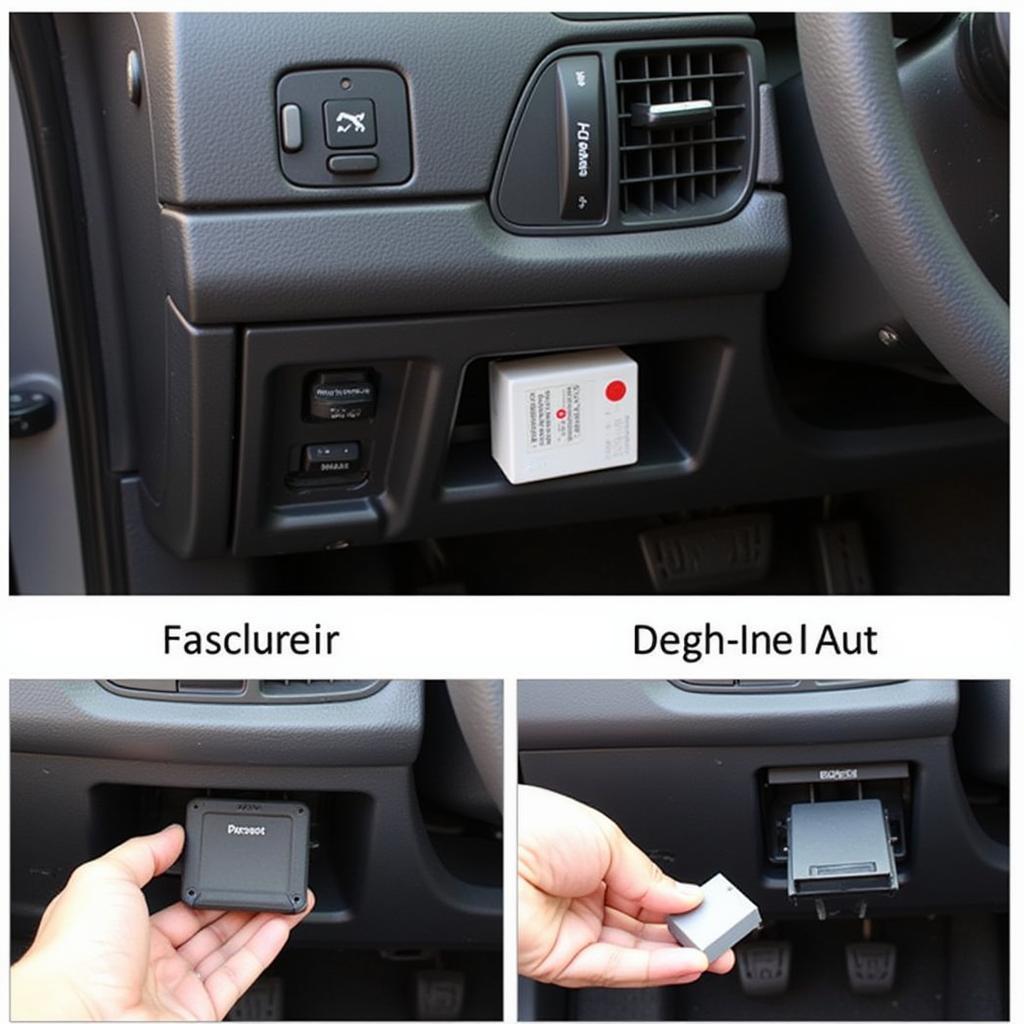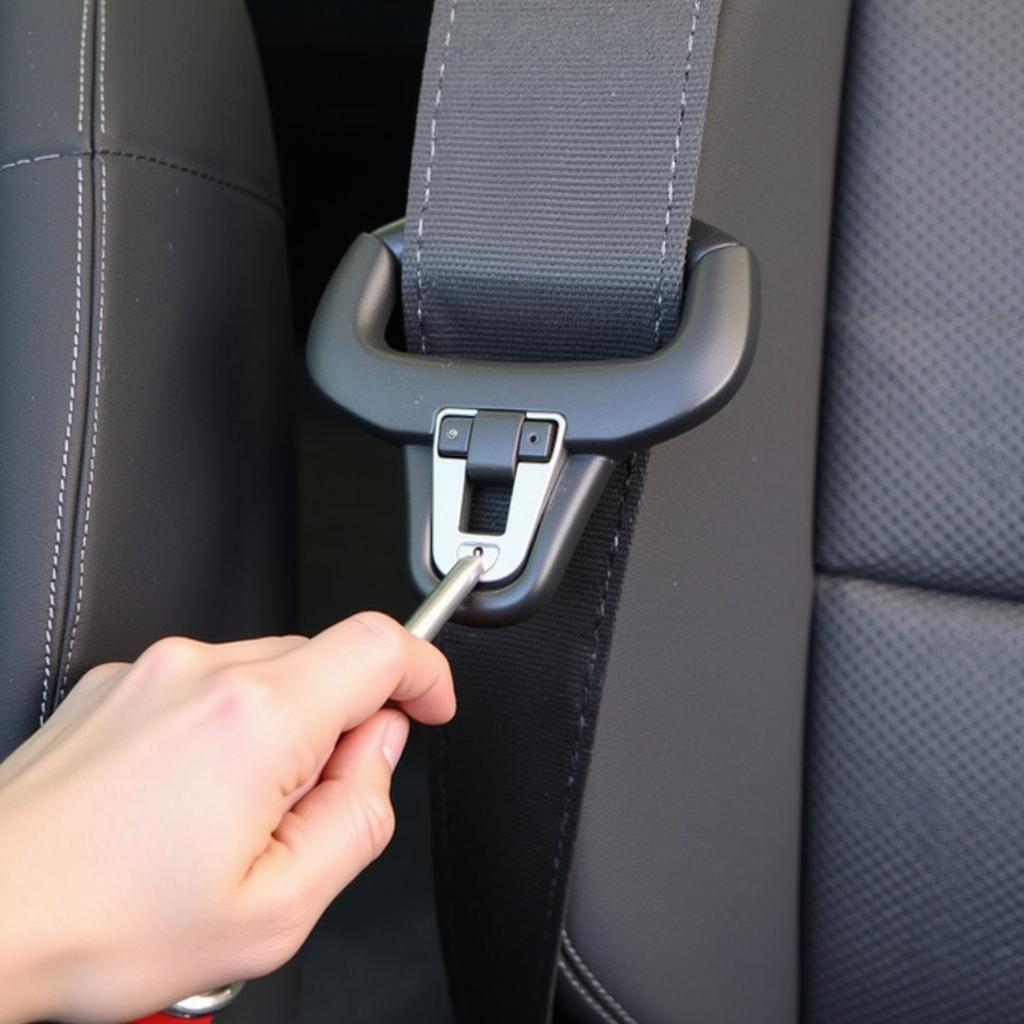The sudden illumination of the airbag and seat belt warning light on your dashboard can be a jarring experience. While it might induce a moment of panic, it’s crucial to understand that this warning light is your car’s way of telling you there’s a potential safety issue that needs your attention. This article will delve into the common causes of this warning light, guide you through potential troubleshooting steps, and explain when professional help is necessary.
Understanding Your Car’s Safety System
Before we delve into the specifics of the airbag and seat belt warning light, it’s helpful to understand how these systems work in tandem to keep you safe.
Your car’s airbag system is a complex network of sensors and modules that work together to deploy airbags in the event of a collision. These sensors collect data on impact severity and occupant position, ensuring that the airbags deploy only when necessary and with the appropriate force.
The seat belt system, while seemingly simpler, is equally critical. When you fasten your seat belt, you engage a pretensioner system that tightens the belt in a crash, holding you securely in place and working in conjunction with the airbags to minimize injury.
The airbag and seat belt warning light serves as the primary communication link between these safety systems and you, the driver.
Common Causes of the Airbag and Seat Belt Warning Light
The airbag and seat belt warning light can be triggered by a variety of issues, ranging from minor glitches to more serious system malfunctions. Here are some of the most common culprits:
- Faulty Seat Belt Buckle/Sensor: The most frequent cause is often the simplest – a problem with the seat belt buckle itself. The buckle houses a sensor that detects if the belt is fastened. If this sensor malfunctions or becomes dirty or obstructed, it can trigger the warning light.
- Wiring Issues: The intricate web of wires connecting the airbag system components can sometimes be susceptible to damage. A loose connection, corrosion, or a frayed wire can disrupt the flow of information within the system, leading to the warning light.
- Faulty Clockspring: The clockspring is a spiral-shaped electrical connector located behind the steering wheel. It allows for the electrical connections to be maintained as the steering wheel rotates. A damaged or malfunctioning clockspring can interrupt the signal from the airbag module, causing the warning light to illuminate.
- Depleted Airbag Module Backup Battery: Your airbag module has a backup battery to ensure the system can still deploy the airbags in the event of a primary power failure during an accident. If this battery is depleted, it can trigger the warning light.
- Faulty Airbag Control Module: The airbag control module is the brain of the entire airbag system. It receives data from various sensors, processes this information, and triggers the deployment of airbags when necessary. A malfunctioning control module can lead to a range of issues, including the illumination of the warning light.
 Car Airbag Control Module Location
Car Airbag Control Module Location
Troubleshooting the Airbag and Seat Belt Warning Light
While some issues necessitate professional attention, there are a few troubleshooting steps you can take at home:
- Check Your Seat Belts: Begin with the basics. Ensure all seat belts are properly fastened. If a belt is not fully latched, it can trigger the warning light. Try unbuckling and re-buckling each seatbelt several times to clear any potential glitches.
- Inspect the Wiring (Visually): If possible, take a look under your seats and around the seat belt buckles for any visible signs of wiring issues. Look for loose connections, corrosion, or damaged wires.
- Check Your Owner’s Manual: Your car’s owner’s manual can be a valuable resource. It often contains specific information about your vehicle’s airbag system and may offer additional troubleshooting tips or insights.
 Driver Consulting Car Owner's Manual for Warning Light Information
Driver Consulting Car Owner's Manual for Warning Light Information
When to Seek Professional Help
If the warning light persists despite your initial troubleshooting attempts, it’s crucial to seek professional help. Attempting to diagnose or repair the airbag system yourself can be dangerous and potentially cause accidental airbag deployment.
A qualified mechanic or an automotive electrician can use specialized diagnostic tools to pinpoint the exact cause of the problem and carry out the necessary repairs safely and effectively.
Professional Airbag and Seat Belt System Services
Modern vehicles rely heavily on sophisticated software to ensure the optimal functioning of various systems, including safety features like airbags and seat belts. As a result, addressing issues related to these systems often requires more than just mechanical expertise. This is where specialized diagnostic services and software solutions come into play.
Here’s a breakdown of how these services can address airbag and seat belt warning light problems:
- Remote Diagnostics: In many cases, the initial diagnosis can be performed remotely. This involves connecting your vehicle to a diagnostic computer wirelessly. This process allows technicians to read fault codes stored in the vehicle’s computer, providing valuable insights into the potential causes of the warning light.
- Software Updates and Reprogramming: Sometimes, the warning light might be triggered by a software glitch or an outdated system. Technicians can use specialized software to update your vehicle’s airbag control module with the latest software version, potentially resolving the issue. In other situations, reprogramming the module might be necessary to address specific faults or adapt to changes made to the vehicle, such as the replacement of an airbag component.
- Component Replacement and Calibration: If a faulty component is identified, such as the clockspring, a seat belt pretensioner, or even the airbag control module itself, it will need to be replaced. After replacement, calibration is often necessary to ensure the new component integrates seamlessly with the vehicle’s safety system. This calibration process typically involves specialized tools and software to ensure the new part functions correctly and communicates effectively with the rest of the system.
Prevention Tips
While not all airbag and seat belt system issues are preventable, here are some tips to minimize the risk of encountering problems:
- Regular Vehicle Maintenance: Adhering to your car’s recommended maintenance schedule can help identify potential issues early on, including those related to wiring or battery health.
- Avoid Aftermarket Modifications: Modifying your car’s electrical system or making significant changes to its structure, particularly around the seats and dashboard, can sometimes interfere with the airbag system. If you’re considering any modifications, consult with a qualified professional to understand the potential risks.
- Keep Your Car Clean: It might sound surprising, but keeping your car’s interior clean, especially around the seat belt buckles, can prevent dust and debris from interfering with the sensors.
 Close-Up of Seatbelt Buckle Cleaning
Close-Up of Seatbelt Buckle Cleaning
The Importance of Addressing the Warning Light Promptly
Remember, the airbag and seat belt warning light is a crucial safety indicator. Ignoring it could have serious consequences in the event of an accident. If you notice this warning light on your dashboard, take the time to investigate the issue or consult a professional. Your safety, and the safety of your passengers, could depend on it.
FAQs
Q: Can I still drive my car with the airbag and seat belt warning light on?
A: While it’s technically possible to drive with the warning light on, it’s highly discouraged. The light indicates a potential problem with your safety system, meaning the airbags might not deploy correctly, or at all, in an accident.
Q: How much does it cost to fix an airbag and seat belt warning light issue?
A: The cost can vary widely depending on the underlying cause. A simple fix, like a faulty seat belt buckle sensor, might only cost a few hundred dollars. However, more complex issues requiring module replacement could cost significantly more.
Q: Can I reset the airbag light myself?
A: While there are methods to reset the airbag light, it’s not recommended unless you have the proper knowledge and tools. Incorrectly resetting the light without addressing the root cause could mask a serious safety issue.
Q: How often do airbag systems need to be serviced?
A: Airbag systems don’t have a specific service interval. However, it’s good practice to have them inspected by a professional if you experience any warning lights or suspect a problem.
Q: Do seat covers affect airbags?
A: Some types of seat covers, especially those that are not specifically designed for vehicles with side-impact airbags, can interfere with airbag deployment. Make sure any seat covers you use are compatible with your car’s safety systems.
Q: My airbag light flashes intermittently. What does this mean?
A: A flashing airbag light typically indicates a more serious problem compared to a solid light. It could signify a fault within the airbag control module, a malfunctioning sensor, or a problem with the wiring.
Q: Can a dead car battery cause the airbag light to come on?
A: Yes, a dead or severely discharged car battery can sometimes trigger the airbag light. This usually happens because the airbag system’s backup battery doesn’t have enough power to maintain its charge.
